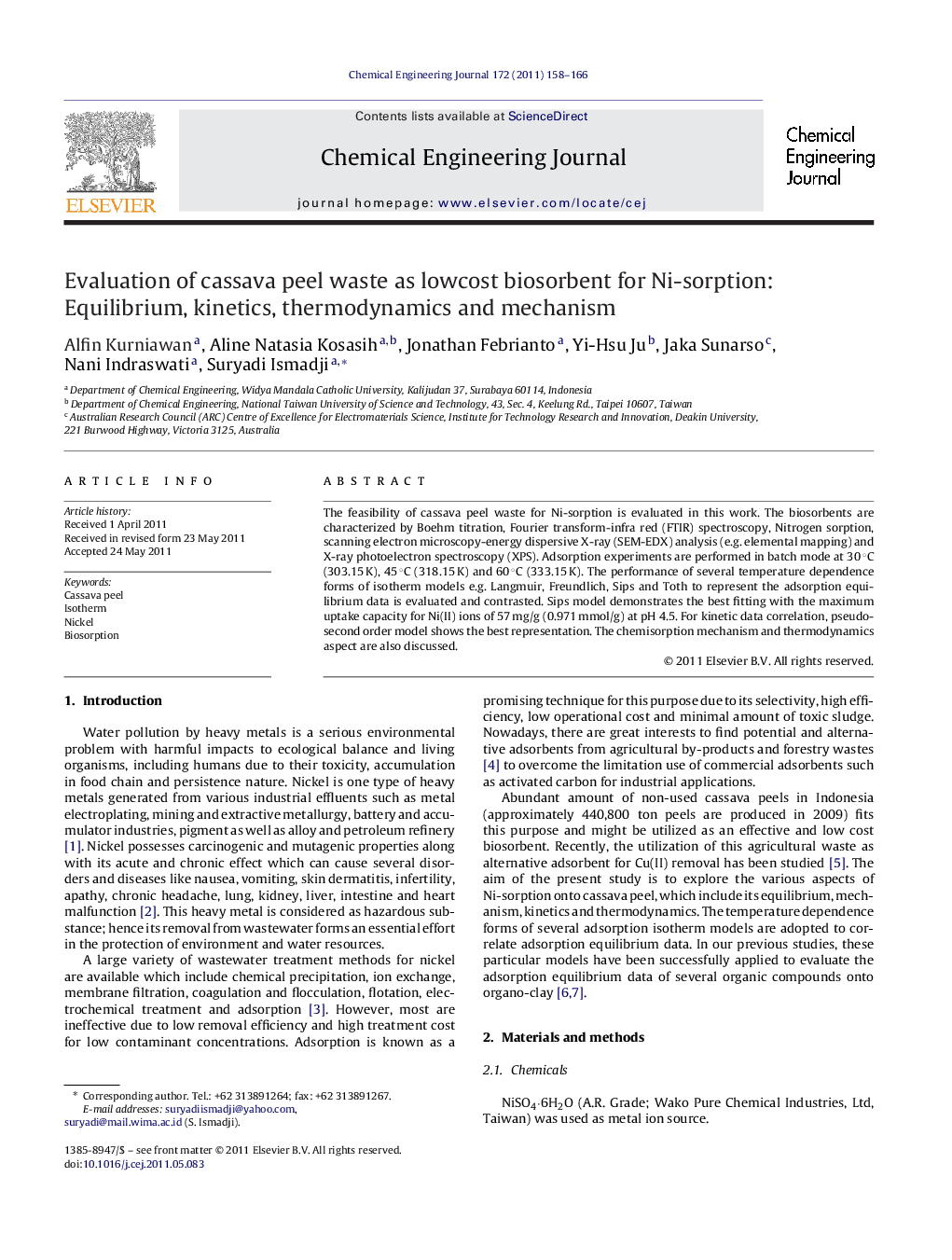| Article ID | Journal | Published Year | Pages | File Type |
|---|---|---|---|---|
| 151038 | Chemical Engineering Journal | 2011 | 9 Pages |
The feasibility of cassava peel waste for Ni-sorption is evaluated in this work. The biosorbents are characterized by Boehm titration, Fourier transform-infra red (FTIR) spectroscopy, Nitrogen sorption, scanning electron microscopy-energy dispersive X-ray (SEM-EDX) analysis (e.g. elemental mapping) and X-ray photoelectron spectroscopy (XPS). Adsorption experiments are performed in batch mode at 30 °C (303.15 K), 45 °C (318.15 K) and 60 °C (333.15 K). The performance of several temperature dependence forms of isotherm models e.g. Langmuir, Freundlich, Sips and Toth to represent the adsorption equilibrium data is evaluated and contrasted. Sips model demonstrates the best fitting with the maximum uptake capacity for Ni(II) ions of 57 mg/g (0.971 mmol/g) at pH 4.5. For kinetic data correlation, pseudo-second order model shows the best representation. The chemisorption mechanism and thermodynamics aspect are also discussed.
► New and cheap adsorbent for nickel ion removal. ► The first application of the temperature dependent forms of adsorption isotherm. ► New mechanism of Ni-chemisorption onto cassava peel. ► Kinetic and thermodynamic aspect of nickel adsorption.
